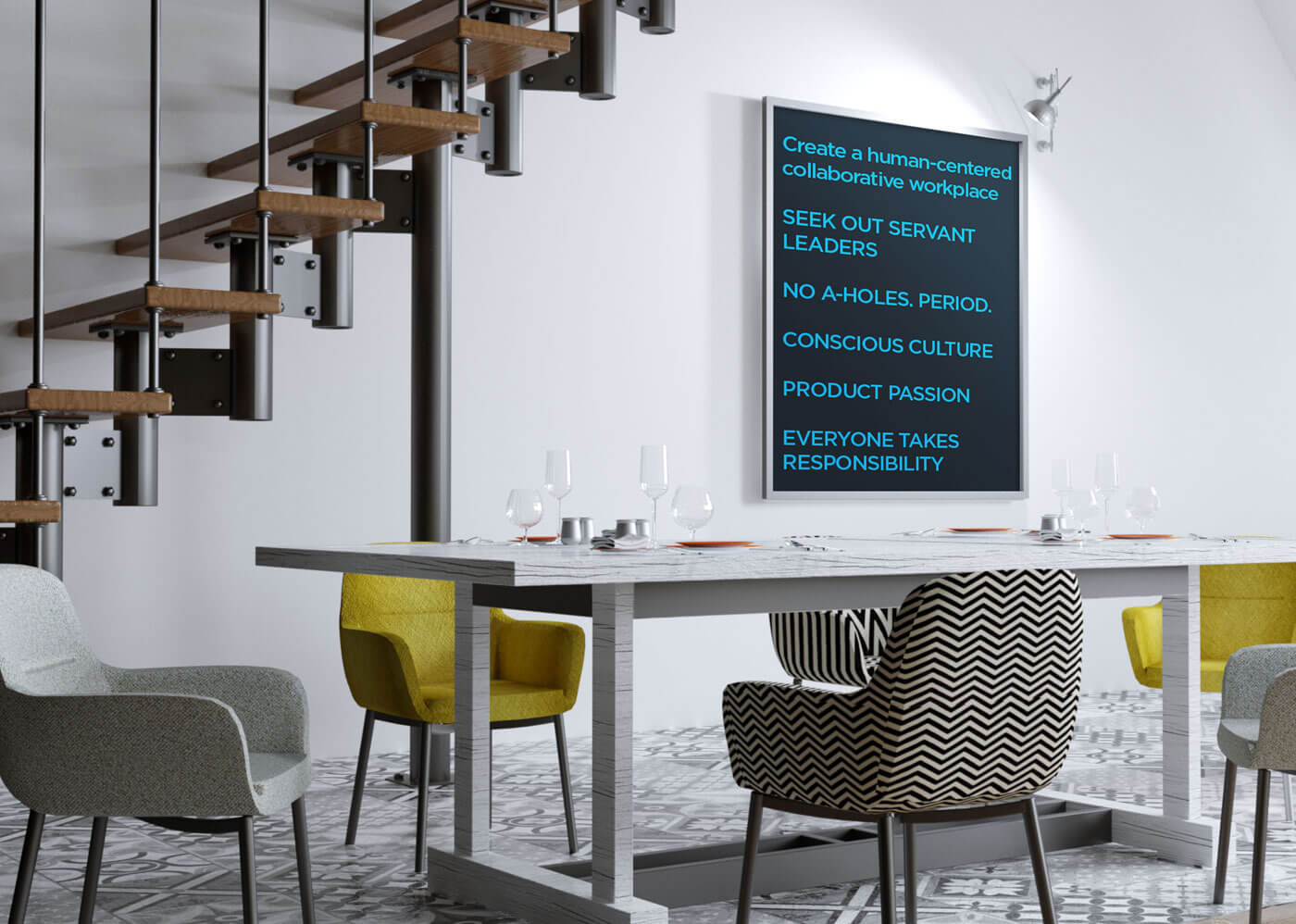
29 Nov Here’s how I find the best collaborative cultures
FAST COMPANY | HOW TO BE A SUCCESS AT EVERYTHING
I worked at eBay, Google, and Cisco. Here’s how I find the best collaborative cultures
Amy Chang of Cisco reveals how watching people walking by and observing facial expressions and body language she could discern if they were actually enjoying working together.
By Amy Chang
In 2005, I faced what felt like at the time, a major career crossroads.
After years at eBay, it was time to switch from the demand side to the buy-side of the paid search space. I’d received job offers from both Google and Yahoo, the latter which at that time was still on Google’s heels for search share. Yahoo rolled out the red carpet with the leadership of a team, more stock, and a higher salary. Google was much more moderate in their offer.
There were a bunch of deciding factors when it came to those two jobs, of course. But the single most important was culture. Wherever you choose to work, first get a feel for whether this culture at a gut instinct level fits you before you join.
A true sense of a place comes from more than taking the interviews and experiencing the product. It’s about seeing how people at the heart of the business collaborate. You can find out so much about an organization by observing the way employees treat each other, what their energy feels like as they’re interacting with one another, and their body language.
So that’s what I did. I went to each campus, found a seat outside for a couple of hours, and intensely watched the comings and goings of the people. The engineer in me was looking for patterns. I figured that if I watched 100 people walking by in clusters of twos and threes, and observed facial expressions and body language patterning, I’d be able to discern, generally speaking, if people were actually enjoying working together.
After two hours on the Google campus, I knew the energy was electric. There was a spark, people were leaning toward each other, smiling, and animatedly engaging with one another. In my gut, I could just feel “it.”
I’d made my decision.
That people-watching approach to decision-making 14 years ago has stayed with me to this day in my role at Cisco where products are created by over 5,000 team members to help 300 million people around the world collaborate every day.
Long after you’ve left a place, you probably have trouble remembering the exact progress metrics you were measuring for any given quarter. You probably have forgotten details around projects and maybe even around the market at that time. What I bet you still remember clearly, though, is the people. You never forget who you’re willing to go into battle with, who has your back, who “gets” what you’re trying to do, who you learn from and, as importantly, who you just want to hang around with during all those hours. The human part remains in the memory long after you leave a place.
Here are some ways to discover (or create) a human-centered collaborative workplace.
SEEK OUT SERVANT LEADERS
These are people who genuinely care for their teams and people and put their people first. They’re the people who are truly capable of putting the team’s needs above their own interests. It’s one of the first qualities I look for when I hire and do informal reference checking. Cisco is led by people who have industry-leading analytical and technical capabilities but who also care so deeply about people and teams.
NO A-HOLES. PERIOD.
I’m sure you and your team are ambitious. I know we are at Cisco. The hardest hiring tradeoff to make is when you find someone who is a functional standout but is, well, a jerk. You know the person: someone who diminishes others or makes colleagues feel like less than they are. I’ve decided as a leader, those people are poison. Life is too short to make people work with a-holes and I don’t want to work with them myself.
CONSCIOUS CULTURE
At Cisco, we talk a lot about the value of conscious culture, where every day is a decided effort to make sure each person feels free to actually be their best at work. For me, this means diversity and inclusion is critical to the workplace. In a business as large as ours, this is nonnegotiable.
PRODUCT PASSION
True empathy and passion for the user always has to be there. This one is pretty self-evident, but the trick is hiring for empathy (and firing those who don’t demonstrate it, too).
EVERYONE TAKES RESPONSIBILITY
In a startup, because you’re so lean, every single person has to take accountability and responsibility. If you see anything broken, you have to take care of it because there is no someone else. You’re it. At large companies, it’s easy to shuffle things off or hide a bit. But that’s the trick–finding people who are proactive and will take active responsibility for those things that sit in the in-between.
The collaboration space is fascinating because it facilitates human connection, true ideation, and moments that spark creation, even if you’re not physically in the same room. Sitting on that bench 14 years ago and seeing how people interacted continues to inspire me. Connecting people, at work and while working, is what I love the most about my job. It’s why I get up every day and do what I do.
Amy Chang is the executive vice president and general manager of Cisco Collaboration.
Love seeing @_amychang sharing her career journey in @FastCompany! So many great rules to live by. Thanks for bringing your passion to @Cisco – we’re so glad you’re part of our team! https://t.co/dYDPjMFHyE
— Chuck Robbins (@ChuckRobbins) November 27, 2019
Before taking her role as Cisco Collaboration EVP, @_amychang looked for key elements in the #workplace environment. Discover what those were: https://t.co/PtbJM4hGOg Via @FastCompany #WorldsBestWorkplaces pic.twitter.com/8GZKNDyF6x
— Cisco (@Cisco) November 27, 2019
“Cisco is led by people who have industry-leading analytical and technical capabilities but who also care so deeply about people and teams.”
Why Collaboration EVP @_amychang chose @Cisco ⬇️ https://t.co/xlJd88iYSF
— Cisco Collaboration (@CiscoCollab) November 27, 2019
Just one of the reasons to #LoveWhereYouWork – being on a team with this fabulous group of ladies!!😍🎸#WeAreCisco pic.twitter.com/TMbewsA8KH
— Amy Chang (@_amychang) January 16, 2020


“The human part is the part that remains long in the memory after you leave a place.” Why Collaboration EVP Amy Chang chose Cisco. Via @FastCompany #WorldsBestWorkplaces https://t.co/zZXv8Yfapu
— Robin Olds (@robin_olds) December 11, 2019
Amy Chang has learned how to answer one of the most difficult questions when considering a new job: Do employees enjoy working together? #WeAreCisco https://t.co/i5KinJHcrF
— Jason Stegeman (@JasonStegeman) December 11, 2019
“Amy Chang of Cisco reveals how watching people walking by and observing facial expressions and body language she could discern if they were actually enjoying working together.” https://t.co/5qqbKxtgtZ pic.twitter.com/lbLrV58rcd
— Lisa Corless (@TriGirlLisa) November 29, 2019

